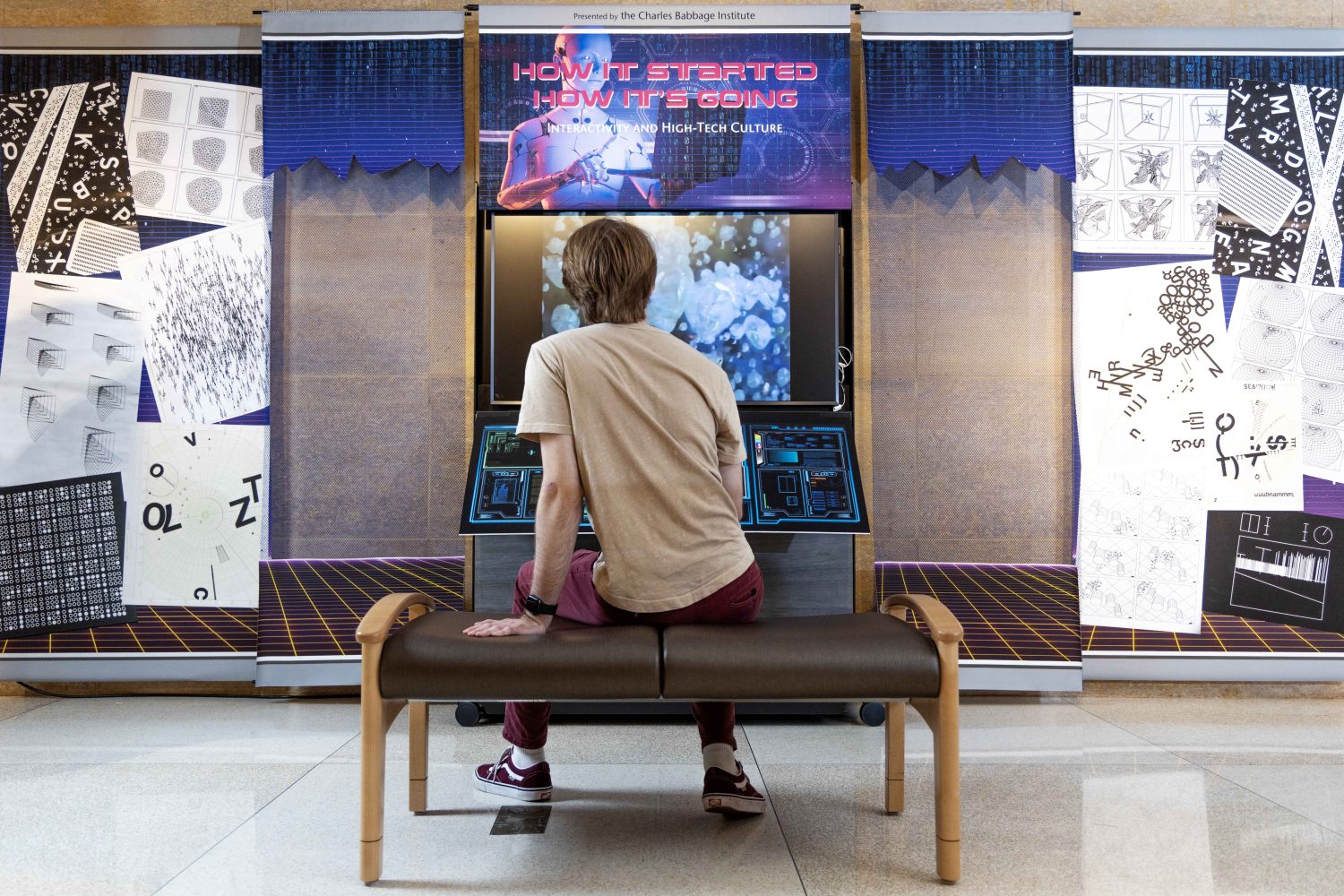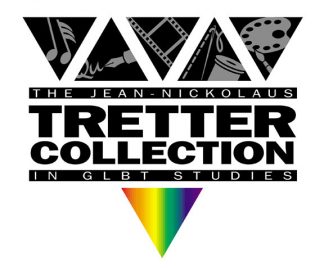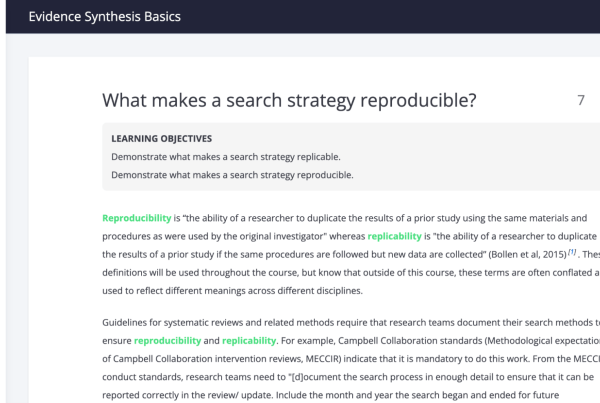By Adria Carpenter

A student worker poses for a portrait at Elmer L. Andersen Library on Thursday, Aug. 3, 2023. (Photo/Adria Carpenter)
Easy to learn, easy to use.
That was the championed slogan for the first personal computers as they crept into daily life. Like the Apple IIe, branded “The Most Personal Computer” in 1983. Or the Macintosh introduced the following year, a computer for the “bemused, confused, and intimidated.”
These computers were touted as revolutionary tools for businessmen, creatives, and students. And the emerging discipline of human-computer interaction (HCI) represented the marriage of technology and psychology.
“That’s the entire goal of those fields. It’s how to make technology accessible for those who might be excluded from using it,” said Amanda Wick, Curator of the Charles Babbage Institute Archives. “At this point, every aspect of our lives is underlaid by technology, and we’re helping develop it further.”
Wick’s exhibit, “How It Started, How It’s Going: Interactivity and High-Tech Culture,” — currently on display in the Elmer L. Andersen Library — showcases newer collection efforts to center the user’s relationship to technology.
From early video games like the Atari 1050 to chunky laptops from the ‘90s, the exhibit highlights materials often underutilized and under-recognized in the collection, which has predominantly specialized in the development of ‘60s and ‘70s supercomputing.
In recent years, the CBI archives has fashioned a more comprehensive historical record by documenting the people behind the screens and circuit boards: the innovators, users, and the overlap between them.
What context surrounded their professional and personal lives? Which groups were supposed to benefit from technological progress? And how were people actually using that technology?
“There’s a lot of debate in the scientific and technology communities about what is the goal of innovation. Is it altruistic, or is it not? Is it ethical?” Wicks said. “Like the Manhattan Project, or something like that. Peaceful applications of nuclear power, versus a bomb.”
The growing calls for accessibility and user-oriented design in the ‘80s and ‘90s, for example, reflected how developers were impacted by the Civil Rights Movements and the Anti-War Movement of the ‘60s and ‘70s.
Wick is specifically interested in overlooked groups like LGBTQ people and women, who were the first to adopt computing and the first to create programming languages, since computing and calculating was seen as menial work for secretaries.
One of her favorite items in the exhibit is a photograph of two motion capture models: a man wearing the stereotypical tech uniform of a plaid button-down shirt with a pocket protector, standing next to women wearing a skin-tight suit.
Instead of focusing on the supposed tech saviors, like Steve Jobs and Bill Gates, Wick wants to evaluate the domino effects technological advancements have had on our lives.
“I think less and less emphasis is going to be put on creators of technology, and more and more on users of technology, or the impact of technology on society as a whole,” she said. “There’s people thinking about how to make you use your computer more, and how to make it easier.”
“How It Started, How It’s Going” is open on the first floor gallery of Elmer L. Andersen Library during normal operating hours (9 a.m. to 5 p.m. on Monday, Tuesday, and Friday; and 9 a.m. to 7 p.m. on Wednesday and Thursday) until Sept. 15, 2023.






